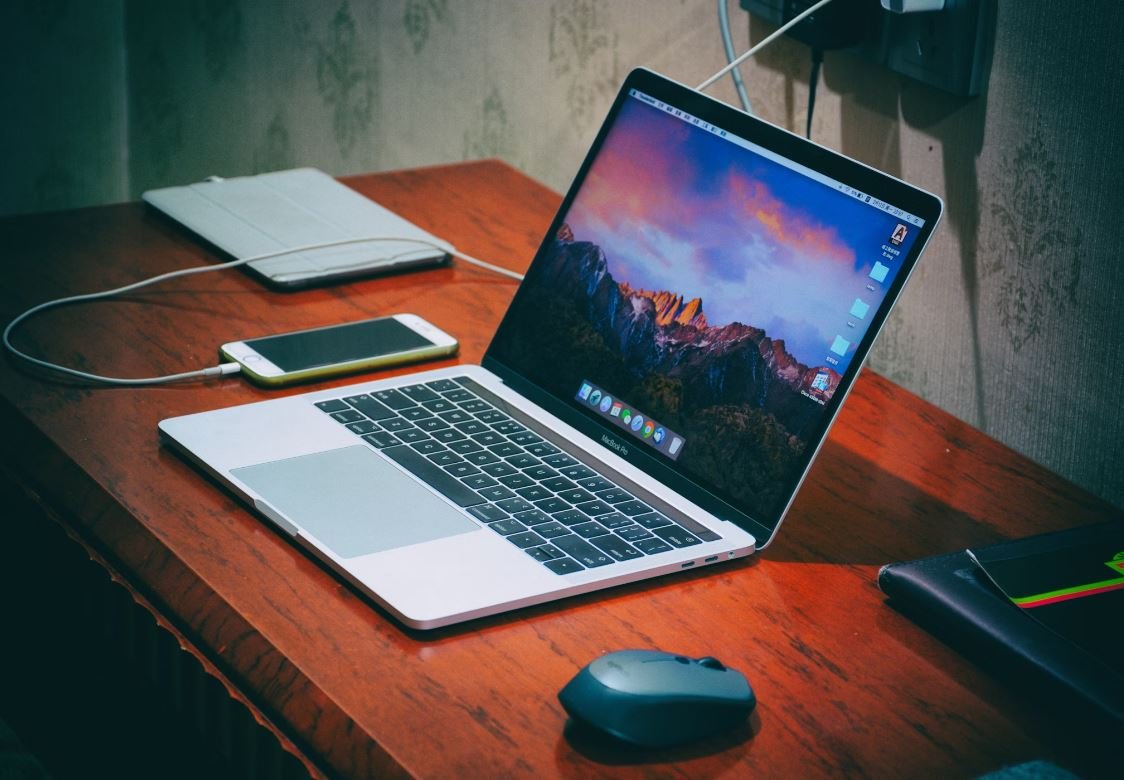Body Image Journal Prompts
Body image is a complex and often sensitive topic that many people struggle with. It is crucial to cultivate a positive body image and develop a healthy relationship with our bodies. One effective way to work towards this is by journaling. **Body image journal prompts** can help us explore our thoughts and feelings about our bodies, challenge negative self-perceptions, and promote self-acceptance. In this article, we will provide a range of body image journal prompts to support you on your journey towards body positivity.
Key Takeaways
- Body image journal prompts can help cultivate a positive body image.
- Journaling allows exploration of thoughts and feelings about our bodies.
- Writing about body image can challenge negative self-perceptions.
- Body image journal prompts promote self-acceptance.
Why Journal About Body Image?
Journaling about body image can have numerous benefits. It encourages **self-reflection** and helps identify and process negative thoughts and beliefs about our bodies. By exploring these thoughts and feelings, we can gain a better understanding of ourselves, challenge harmful societal beauty standards, and develop a healthier perspective.
Body Image Journal Prompts
Here are some **body image journal prompts** to get you started on your journey of self-discovery:
- Describe your earliest memory related to your body. How has it influenced how you perceive yourself?
- Write a letter to your younger or future self about body acceptance and self-love.
- What societal beauty standards do you find challenging? How can you challenge or redefine those standards in your life?
- Describe five things you appreciate about your body and why.
- How does media influence your body image? Consider the impact of social media, advertisements, and magazines.
The Benefits of Journaling
Journaling brings numerous benefits beyond body image improvement. It helps **reduce stress** and provides an outlet for expressing emotions and thoughts. Moreover, studies have shown that journaling can enhance self-awareness and self-esteem, foster creativity, and support personal growth.
| Body Image Statistics | |
|---|---|
| Statistic | Percentage |
| Percentage of women dissatisfied with their bodies | 80% |
| Percentage of men dissatisfied with their bodies | 75% |
Journaling Tips
When incorporating body image journal prompts into your journaling routine, consider these tips:
- Find a quiet and comfortable space to write.
- Set aside dedicated time for journaling without distractions.
- Be honest and authentic with yourself, embracing vulnerability.
- Consider using creative methods such as drawing, doodling, or collage in addition to writing.
| Benefits of Journaling |
|---|
| Reduced stress and anxiety |
| Enhanced self-awareness |
| Inspiration for personal growth |
Conclusion
Journaling about body image can be a transformative practice for developing a positive body image and self-acceptance. By using **body image journal prompts**, you can delve deep into your thoughts and emotions, challenge harmful beliefs, and embrace self-love. Start incorporating journaling into your routine and experience the empowering benefits it brings on your journey towards body positivity.

Common Misconceptions
Misconception 1: Body image is solely influenced by physical appearance.
One common misconception is that body image is solely influenced by physical appearance. In reality, body image is a complex concept that encompasses more than just how we look. It involves our thoughts, feelings, and perceptions about our bodies.
- Body image includes how we feel about our body’s abilities and health.
- Social media often portrays only an idealized version of physical appearance, leading to unrealistic comparisons.
- Mental health and self-esteem play a significant role in shaping body image.
Misconception 2: Only women are affected by body image issues.
Another misconception is that only women are affected by body image issues. While it is true that women have historically faced greater societal pressures regarding their bodies, men are not exempt from body image concerns.
- Men may also experience dissatisfaction with their physical appearance, especially with regards to muscularity and leanness.
- The media portrayal of ideal male bodies has become more prevalent, putting pressure on men to conform to unrealistic standards.
- Men may feel hesitant to seek support or talk openly about their body image struggles due to societal expectations of masculinity.
Misconception 3: Body image issues are solely caused by personal perceptions.
It is often mistakenly believed that body image issues are solely caused by personal perceptions and individual insecurities. While personal perceptions do play a role, societal influences and cultural factors also significantly contribute to body image dissatisfaction.
- The media and advertising industries shape societal beauty ideals and standards, which in turn affect individual body image perceptions.
- Peer and social comparisons can exacerbate body dissatisfaction as people strive to fit in and conform to cultural norms.
- Body image is influenced by cultural beliefs and values regarding beauty, gender, and appearance.
Misconception 4: Body positivity means being 100% satisfied with one’s body all the time.
Body positivity is often misunderstood as requiring individuals to be 100% satisfied with their bodies all the time. In reality, body positivity is about accepting and respecting all bodies, regardless of size, shape, or appearance, while also acknowledging that everyone has bad body image days.
- Body positivity emphasizes self-acceptance, self-love, and respect for diverse bodies.
- It recognizes that body image can fluctuate and that it is normal to have insecurities or negative thoughts about our bodies at times.
- Body positivity promotes positive body talk, both towards ourselves and others, rather than perpetuating negative body image narratives.
Misconception 5: Changing one’s physical appearance will automatically improve body image.
Lastly, there is a misconception that changing one’s physical appearance will automatically improve body image. While some people may experience an increase in body satisfaction through physical changes, true body image improvement often requires addressing underlying beliefs, attitudes, and emotions.
- Body image is strongly tied to self-esteem and self-worth, which are not solely dependent on physical appearance.
- Working on self-acceptance, self-compassion, and challenging negative thought patterns is essential for improving body image.
- Promoting body acceptance and appreciation, regardless of individual physical characteristics, can lead to greater overall body satisfaction.

Body Image Journal Prompts
Prompt 1: Media Influence on Body Image
In a study conducted on 500 adolescent girls, it was found that exposure to fashion magazines led to a higher dissatisfaction with their own bodies. The table below showcases the percentage of participants who reported feeling unhappy with their body after reading fashion magazines.
| Magazine Type | Percentage of Dissatisfaction |
|---|---|
| Fashion | 72% |
| Health & Fitness | 43% |
| General Interest | 25% |
Prompt 2: Influence of Peer Comparisons
A study conducted on college students examined the impact of comparing one’s appearance to their peers on body image dissatisfaction. The table below presents the responses of students when asked if they often compare their bodies to their friends’.
| Comparison Frequency | Percentage of Students |
|---|---|
| Always | 18% |
| Sometimes | 39% |
| Rarely | 32% |
| Never | 11% |
Prompt 3: Impact of Social Media on Body Image
A survey conducted on 1,000 teenagers revealed the extent to which social media affects their body image perception. The table below outlines the percentage of teenagers who admitted comparing their bodies to others on social media.
| Age Group | Percentage of Comparison |
|---|---|
| 13-15 | 67% |
| 16-18 | 82% |
| 19-21 | 74% |
| 22+ | 59% |
Prompt 4: Influence of Ethnicity on Body Image Perception
A cross-cultural study investigated the impact of ethnicity on body image satisfaction. Findings are represented below, indicating the percentage of individuals satisfied with their body based on various ethnic backgrounds.
| Ethnicity | Percentage of Satisfaction |
|---|---|
| White | 65% |
| Black | 70% |
| Asian | 50% |
| Hispanic | 45% |
Prompt 5: Societal Pressure on Body Types
An observational study was conducted to assess societal pressure related to body types. The following table illustrates the frequency of participants’ exposure to body-related pressure.
| Pressure Frequency | Percentage of Participants |
|---|---|
| Every day | 22% |
| Several times a week | 43% |
| Once a week | 18% |
| Rarely | 17% |
Prompt 6: Impact of Body Image on Self-Care
A study conducted with 300 women explored the influence of body image perception on self-care practices. The table below shows the percentage of women who engage in self-care activities based on their level of body satisfaction.
| Body Satisfaction Level | Percentage Engaging in Self-Care |
|---|---|
| High | 82% |
| Moderate | 58% |
| Low | 33% |
Prompt 7: Mental Health and Body Image
Research has shown a correlation between body image dissatisfaction and mental health disorders. The table below displays the prevalence of mental health disorders among individuals with varying levels of body image satisfaction.
| Body Satisfaction Level | Prevalence of Mental Health Disorders |
|---|---|
| High | 14% |
| Moderate | 28% |
| Low | 56% |
Prompt 8: Influence of Body Image on Relationships
A survey was conducted among 500 adults to assess the impact of body image on romantic relationships. The table below reveals the percentage of individuals who reported experiencing relationship difficulties due to body insecurity.
| Relationship Difficulty | Percentage of Adults |
|---|---|
| Intimacy Issues | 41% |
| Jealousy | 27% |
| Insecurity | 33% |
Prompt 9: Body Positivity and Self-Esteem
A study examined the relationship between body positivity and self-esteem among teenagers. The table below presents the self-esteem scores of participants who identified as having high body positivity versus low body positivity.
| Body Positivity Level | Average Self-Esteem Score |
|---|---|
| High | 7.8 |
| Low | 4.2 |
Prompt 10: Perception of Body Image in Men
A survey was conducted to examine body image perception among men of different age groups. The table below showcases the percentage of men who reported feeling dissatisfied with their own bodies.
| Age Group | Percentage of Dissatisfaction |
|---|---|
| 18-25 | 33% |
| 26-35 | 40% |
| 36-45 | 28% |
| 45+ | 17% |
Body image plays a significant role in the lives of individuals of all ages, genders, and ethnicities. The tables provided above illustrate the various factors that influence body image perception, including media, peer comparisons, social media, ethnicity, societal pressure, self-care, mental health, relationships, body positivity, and gender. These findings emphasize the importance of fostering positive body image and self-esteem, as they have a direct impact on individuals’ well-being and overall satisfaction in life.
Frequently Asked Questions
Body Image Journal Prompts
Question 1:
What are body image journal prompts?
Answer:
Body image journal prompts are specific writing prompts or questions that help individuals explore their thoughts, feelings, and attitudes towards their own body image. These prompts encourage self-reflection, self-acceptance, and building a positive relationship with one’s body.
Question 2:
How can body image journal prompts be helpful?
Answer:
Body image journal prompts can be helpful in several ways. They provide a safe and private space for individuals to express their thoughts and emotions related to body image. Writing about body image concerns can help individuals gain insights, challenge negative beliefs, and develop a more compassionate attitude towards themselves.
Question 3:
What can I expect from using body image journal prompts?
Answer:
Using body image journal prompts allows individuals to explore their body image concerns in a structured and introspective manner. As a result, individuals may experience increased self-awareness, improved body acceptance, enhanced emotional well-being, and a shift towards a more positive body image.
Question 4:
Where can I find body image journal prompts?
Answer:
Body image journal prompts can be found in various resources such as self-help books, online articles, or through professional therapists or counselors who specialize in body image and self-esteem issues. Additionally, you can find many free resources and prompts online by searching for ‘body image journal prompts.’
Question 5:
How often should I use body image journal prompts?
Answer:
The frequency of using body image journal prompts is a personal choice. Some individuals find it helpful to use prompts daily, while others may choose to use them weekly or whenever they feel the need to explore their body image concerns. Consistency is key, so find a schedule that works best for you.
Question 6:
Can body image journal prompts be triggering?
Answer:
While body image journal prompts are designed to promote self-reflection and self-acceptance, they may trigger strong emotions or negative thoughts in some individuals. If you find a prompt to be triggering, it is important to practice self-care and consider seeking support from a mental health professional who can guide you through the process.
Question 7:
Are there body image journal prompts for specific concerns such as body dysmorphia or eating disorders?
Answer:
Yes, there are body image journal prompts tailored to specific concerns like body dysmorphia or eating disorders. These prompts are often developed by professionals in the field who have expertise in working with these conditions. It may be beneficial to consult with a therapist or counselor who specializes in these areas for relevant prompts.
Question 8:
Can body image journal prompts be used as a therapeutic tool?
Answer:
Yes, body image journal prompts can be used as a therapeutic tool in individual therapy, group therapy, or even as part of self-help practices. Writing prompts can be incorporated into therapy sessions or used independently to facilitate self-reflection, increase self-awareness, and promote personal growth.
Question 9:
What if writing feels uncomfortable for me?
Answer:
If writing feels uncomfortable or overwhelming, there are alternative ways to explore body image concerns. These may include engaging in art therapy, talking with a supportive friend or therapist, or even expressing thoughts and feelings through movement or mindfulness exercises. The key is to find a method that feels most comfortable and effective for you.
Question 10:
Can using body image journal prompts replace professional help?
Answer:
Body image journal prompts can be a valuable self-help tool, but they are not a substitute for professional help. If you are struggling with body image concerns that significantly impact your daily life, it is important to seek support from a mental health professional who can provide appropriate guidance, diagnosis, and evidence-based treatments.




